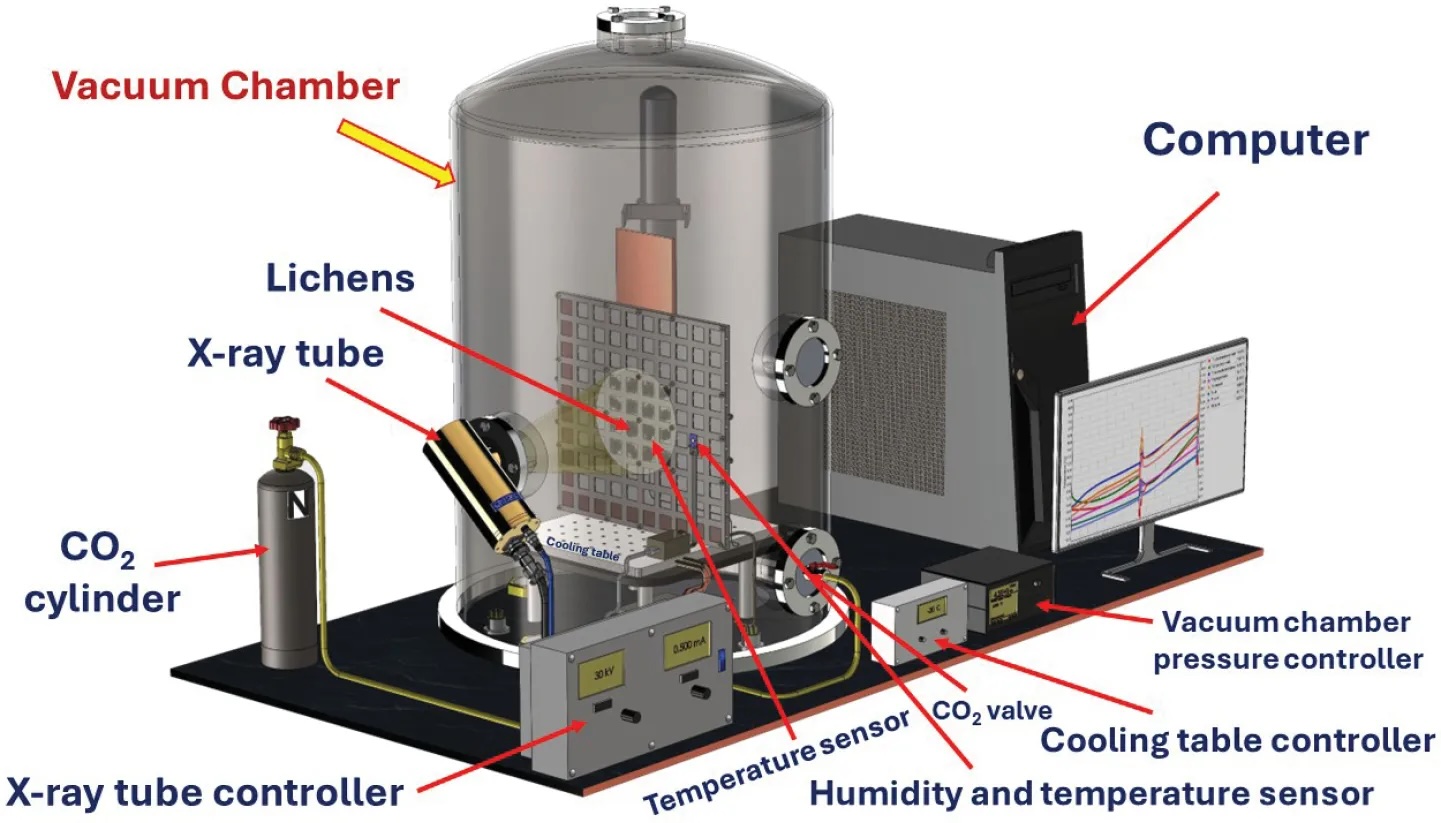Lichens are true pioneers, setting themselves up in environments so harsh as to be considered virtually barren. Given time, they can lay the foundations for whole fields of stone, sand, or even rooftops to transform into diverse ecosystems.
So why not Mars?
A team of biologists from Jagiellonian University in Poland and the Polish Academy of Sciences investigated just that in an experiment conducted inside the Polish Academy of Sciences' Space Research Center. They wanted to know which physical and biochemical properties might help lichens survive Mars-like conditions while remaining metabolically active.
"Our study is the first to demonstrate that the metabolism of the fungal partner in lichen symbiosis remained active while being in an environment resembling the surface of Mars," says lead author Kaja Skubala, a botanist from Jagiellonian University in Poland.
"These findings expand our understanding of biological processes under simulated Martian conditions and reveal how hydrated organisms respond to ionizing radiation – one of the most critical challenges for survival and habitability on Mars."
Lichens are bizarre structures in which a fungus and an algae or cyanobacteria partner up to form a colony that can survive conditions they never would on their own.
They can enter a state of dormancy when times are tough, reviving on contact with water to feed and grow once more. Like the tardigrades that sometimes inhabit their nooks and crannies their ability to survive Earth's harshest conditions makes them prime candidates for extraterrestrial study.
Because the fungi-algae duos are fundamentally reliant upon one another, each kind of lichen is still named as if it is a single species. The two species entered in this Mars simulation were the crusty, pale, and bulbous Diploschistes muscorum, and the dark, branching, seaweed-like Cetraria aculeata.
Each lichen was awoken with a light misting of water before being placed inside a vacuum chamber for five hours, with the first two hours set to a Martian daytime surface temperature of 18 degrees Celsius (about 64 degrees Fahrenheit), dropping gradually into a two-hour-long Martian night at -26 degrees Celsius.

Gas consisting of 95 percent carbon dioxide was pumped into the tank to simulate a Martian atmosphere at ground level, with humidity ranging from an extremely arid 8 to 32 percent. The pressure was set to a very low 5 to 7 millibars, which is more than 1000 millibars lower than the pressure of Earth's atmosphere at sea level.
How lichens cope with Martian levels of UV radiation and other harsh conditions has already been studied extensively, so Skubala and team were focused instead on the ionizing power of X-rays.
The lichens were zapped with a 50-gray dose of X-ray radiation, comparable to what the surface of Mars can receive in a year via energetic Solar particles and flares. The red planet has a thin atmosphere and no global magnetic field; two factors that protect us Earthlings from the solar onslaught.
Only one of the species survived these conditions: D. muscorum. The researchers think its heavy crust, laced with calcium oxalate crystals inside and out, might have protected it from radiation damage.
"While calcium oxalate has a relatively low atomic number, which makes it less effective at absorbing X-rays than heavier elements, the dense crystal deposits on the [lichen's] surface could allow calcium atoms to interact with low-energy X-rays, absorbing part of their energy," the authors write.
The other species, C. aculeata, did not fare so well, though it was selected for its ability to survive extreme Earth environments in the Arctic and Antarctic.
The scientists knew the melanin pigments that give this lichen its dark brown to black colour would protect it from unbridled Martian sunburn, since the coloration can filter radiation in the UVB and UVA spectrum. But melanin is also a powerful antioxidant, which the team thought may help it withstand ionizing radiation.
Yet, C. aculeata experienced high levels of stress from the X-rays, which showed up as damaged membranes, failing enzymes, and hydrogen peroxide build-up. Notably, this lichen has no calcium oxalate, which may be a deciding factor in Mars survival.
Of course, whether we should introduce new species to unknown environments to achieve our goals is a different question – one we humans don't exactly have the best track record with.
That's if it's even possible: a simulation like this provides just a small taste of the harsh realities of the red planet.
"Ultimately, this research deepens our knowledge of lichen adaptation and their potential for colonizing extraterrestrial environments," Skubala says.
This research was published in IMA Fungus.
